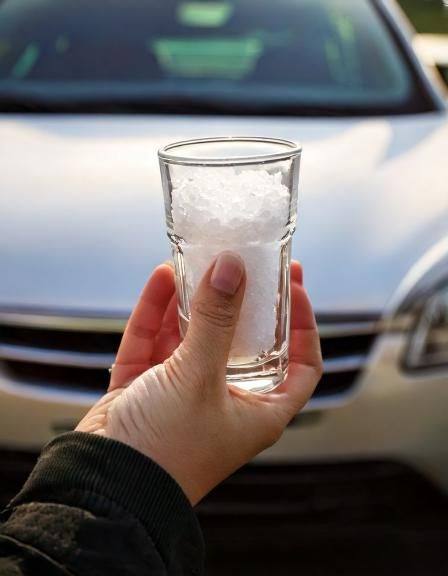ADVERTISEMENT
4. **Preventing Rust and Corrosion**
If you live in an area that experiences frequent rain or snow, or if your car is exposed to salty air (like in coastal regions), you might notice that your vehicle’s metal parts start to show signs of rust and corrosion over time. This is especially true for parts like the undercarriage, wheel wells, and exhaust system.
While the salt in your car doesn’t directly prevent rusting on the exterior of the car, it can help reduce the moisture levels inside your vehicle, which can contribute to rust in areas that are prone to it. Salt acts as a **moisture-absorbing agent**, helping to lower the overall humidity inside your car, which could otherwise speed up the process of rust and corrosion.
5. **Helping With Windshield Wiper Issues**
Another surprising benefit of placing a glass of salt in your car is that it can improve the effectiveness of your windshield wipers. How does this work? When there is excess moisture in the air inside the car, it can get trapped in the wiper fluid reservoir, which can sometimes dilute or cause problems with the functioning of the wipers.
By keeping the air inside your car dry, salt helps maintain the proper functioning of the windshield wiper system, ensuring that your windshield remains clear and that your wipers operate smoothly without interference from excess moisture or fog.
### **How to Use Salt in Your Car Effectively**
Now that we understand the benefits of using salt in your car, let’s take a look at how you can implement this hack correctly to maximize its effectiveness.
#### **Step 1: Choose the Right Container**
While any glass container can work for this hack, it’s important to choose something that will securely hold the salt and not tip over while driving. A simple glass jar or small bowl with a lid works well, as it keeps the salt contained while also allowing the moisture to be absorbed into the air. You can also use an airtight container to ensure that the salt doesn’t spill out.
#### **Step 2: Use the Right Amount of Salt**
To start, you’ll need a **small to medium-sized glass jar** and fill it with about **1-2 cups of salt**. You can use table salt, Epsom salt, or sea salt – whichever you have on hand. There’s no need to go overboard with the amount of salt, as even a small amount can do wonders for moisture absorption in your car.
#### **Step 3: Place the Salt in a Convenient Location**
Place the jar or container in an area of the car where it will not be disturbed, but where it can still absorb moisture effectively. Ideal spots include:
– **Under the seats**: A spot where it won’t be knocked over or interfere with your driving.
– **On the floorboard**: Near the back seat or the front passenger area.
– **In the glove compartment or center console**: These locations also help contain the moisture without being in the way.
Avoid placing the jar in direct sunlight or in areas that might get too hot, as this could cause the salt to clump together.
#### **Step 4: Replace the Salt Regularly**
Salt absorbs moisture, so over time it will become saturated and less effective. To maintain its moisture-absorbing capabilities, it’s important to replace the salt every **few weeks** or when you notice that the salt seems to be “used up.” You’ll know it’s time to replace it when the salt looks wet or the air in your car feels damp again.
For Complete Cooking STEPS Please Head On Over To Next Page Or Open button (>) and don’t forget to SHARE with your Facebook friend
